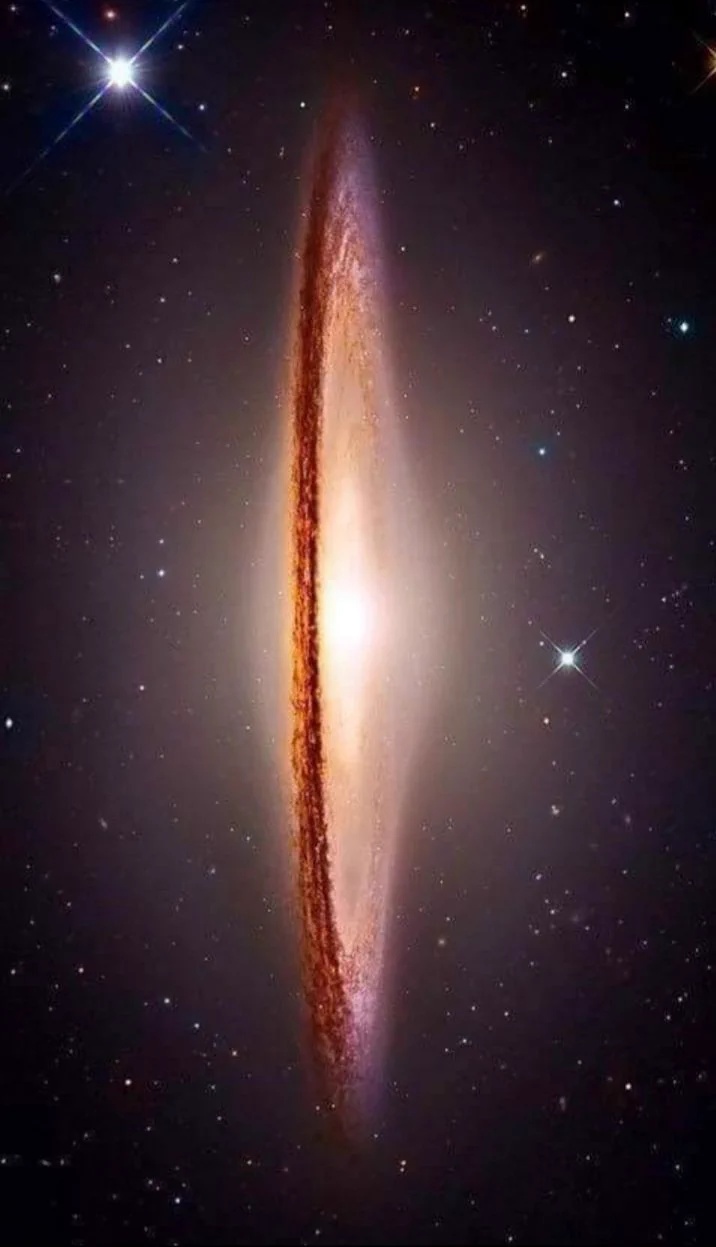Cosmos M104
This stunning JWST image of M104, also known as the Sombrero galaxy, is one of the largest mosaics ever assembled from JWST observations. The hallmark of the nearly edge-on galaxy is a brilliant, white, bulbous core encircled by thick dust lanes comprising the spiral structure of the galaxy. This dust lane is the site of star formation in the galaxy. The center of M104 is thought to be home to a massive black hole.
Hubble easily resolves the Sombrero galaxy’s rich system of globular clusters, estimated to be nearly 2,000 in number — 10 times more than the number of globular clusters in our Milky Way galaxy. The ages of the clusters are similar to those in the Milky Way, ranging from 10-13 billion years old. Embedded in the bright core of M104 is a smaller disk (not visible in the image), which is tilted relative to the large disk. X-ray emission suggests that there is material falling into the compact core, where a one-billion-solar-mass black hole resides.
With an apparent magnitude of 8, the Sombrero galaxy is beyond the limit of naked-eye visibility but can be spotted through small telescopes most easily during May. M104 is located 28 million light-years away in the constellation Virgo, and with a mass equal to 800 billion suns, it is one of the most massive objects in the Virgo galaxy cluster.
M104 was discovered in 1781 by the French astronomer and comet hunter Pierre Méchain, one of Charles Messier’s colleagues.
